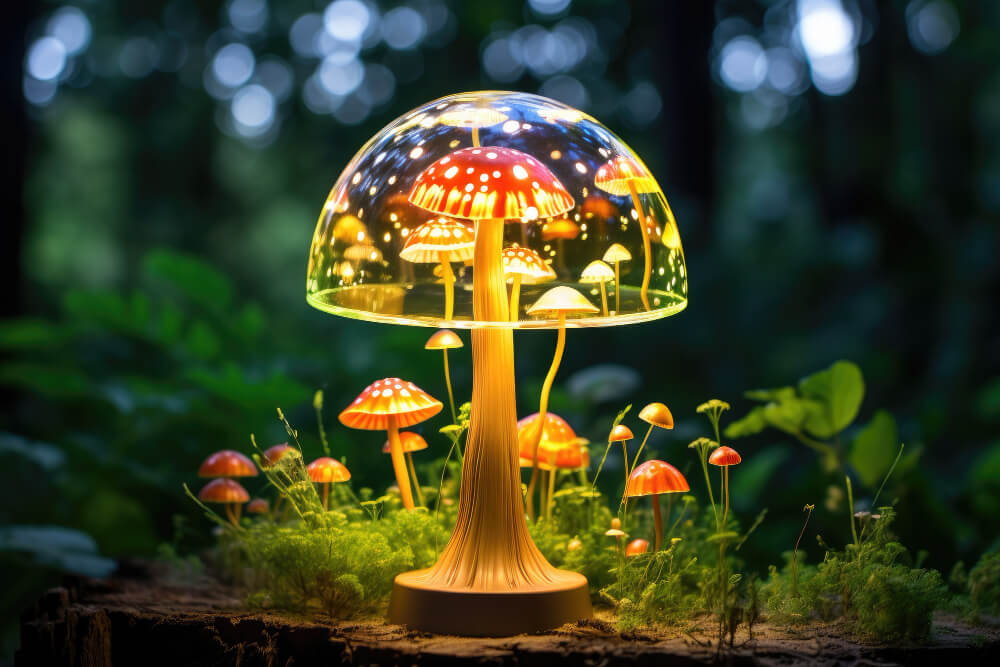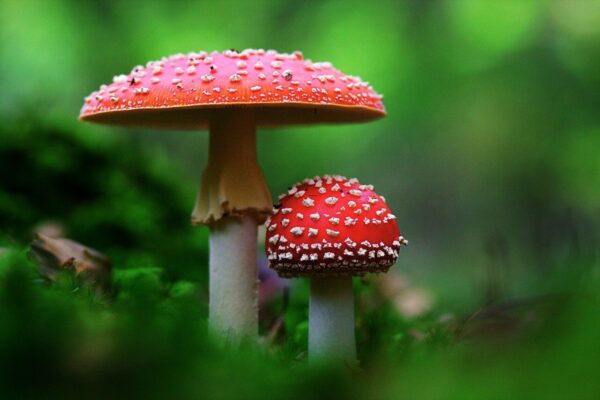Have a question? 06 70 73 89 02
🔞 Not for sale to under 18s
🎄 End of the year = Maximum discounts on ALL products 🎅
Have a question? 06 70 73 89 02

Adventurers and lovers of psychoactive effects, we've discovered a new continent for you: Muscimole.
Unlike most of our previous articles, we're not dealing here witha new cannabinoid. Muscimole is a psychoactive, hallucinogenic alkaloid synthesized by mushrooms of the Amanites family.
Want to learn more about it, its effects and medical applications? Follow the guide below!
As we've said, muscimole is an alkaloid, a very broad family of plant-derived molecules different from cannabinoids. It was the discovery of these molecules that led to the development of the pharmaceutical industry in the early 20th century. They include most natural molecules ending in "-ine", such as nicotine, caffeine, morphine...
There are 100s and 100s of alkaloids in nature, including Muscimole, which is produced exclusively by Amanites, such as Amanita muscaria: the fly agaric. Known throughout Europe, but also in Brazil, South Africa, North America and Central Asia, the fly agaric is recognizable by its bright red color with white flecks.
According to some historians, this mushroom was one of the first hallucinogens used by mankind. Indeed, some Greek texts report that the mushroom was used during the ceremonies of the first cults dedicated to Dionysus. Traces of the mushroom's consumption for medicinal, recreational or religious purposes can also be found in primitive shamanic practices around the globe.

With the development of recreational products such as CBD, various derivatives or new products such as sniffy, some somewhat forgotten molecules are making a comeback. Such is the case with Muscimol. Back in 2018, the molecule could already be found in gummies, jelly sweets that also come in THC and CBD or CBD derivatives.
Today, muscimole is gaining a following and can be found in a wide variety of forms:
Discover our legal CBD derivatives
Muscimole acts primarily as an agonist on GABAA receptors. By binding to these receptors, the molecule inhibits neuronal activity, producing sedative, relaxing and sometimes hallucinogenic effects.
Muscimole therefore produces definite psychoactive and psychotropic effects, and can even produce hallucinogenic effects when consumed in large quantities. But we strongly advise against taking it, as these effects may be accompanied by equally powerful side effects.
As with cannabinoids, the effects of muscimole vary according to the dose consumed, individual sensitivity and consumption method. The effects most often described by consumers are :
But overconsumption can also lead to drowsiness, nausea, hallucinations and feelings of confusion and disorientation, so it's not to be taken lightly.
Although known for centuries, muscimole has been rediscovered relatively recently, but it already benefits from several interesting studies:
The first scientific study on the subject dates back to 1964. It was carried out by four doctors from Tokyo Medical Research University. This pioneering study was the very first to identify and isolate the active agents in fly agaric, including muscimole. In so doing, it paved the way for all subsequent studies.
In a 2002 study, a group of researchers set out to explore the potential anxiolytic effects of muscimole using animal tests and preliminary clinical trials. And, although further research was needed, the researchers concluded that, by activating GABA receptors, muscimol could offer benefits in the treatment of anxiety symptoms.
In an article published in Sleep Medicine reviews in 2015, a group of researchers observed that muscimole-induced sedation had the effect of prolonging deep sleep in patients. And while further studies are still needed to assess the molecule's safety and efficacy, it looks like it could prove beneficial in the treatment of insomnia.
While some studies show the beneficial effects of muscimole, others point to its negative effects. This is the case of two studies: the 1st, published in 1993, demonstrated that muscimole consumption could alter the consolidation of long-term memory and learning by disrupting neuronal activity in key brain regions involved in these processes, such as the hippocampus.
The second study, published in 2007, demonstrated that administration of muscimole to animals made their orientation and location in a complex environment more complicated. This study was thus able to assess the role of GABAA receptors in this type of exercise.
A recent study published in 2010 examined the therapeutic potential of muscimole in the treatment of epilepsy. Results from pre-clinical models show that muscimole can reduce the frequency and severity of epileptic seizures by enhancing GABAergic inhibition in the brain. Muscimole could therefore become a serious candidate for the treatment of epileptic disorders, but as always, further research is required.
In France, as in most European Union countries, the consumption of muscimole is regulated. For example, it is forbidden to consume fly agaric. But the muscimole molecule alone can be consumed. Products in the form of vape pens, gummies and CBD-based products are therefore totally legal.
However, it is forbidden for children, pregnant or breast-feeding women, and before driving. As muscimole-based products are very powerful, we advise you to use them with the utmost caution and avoid over-consumption.